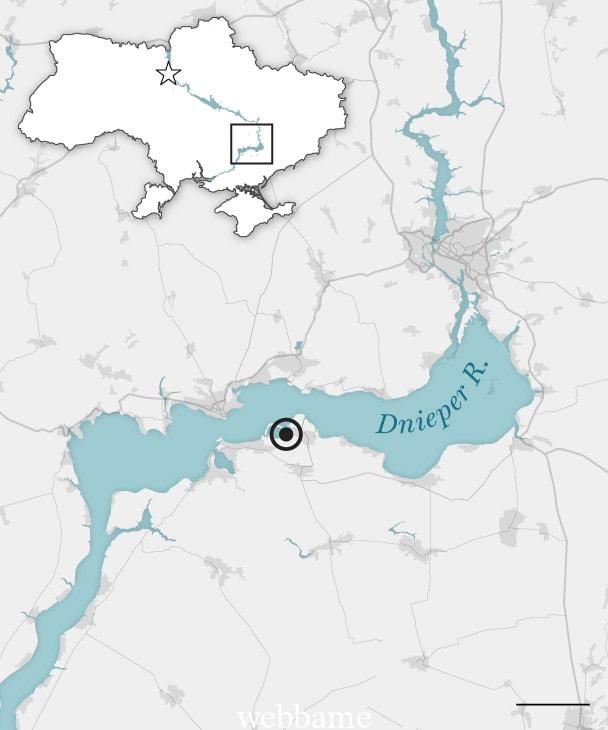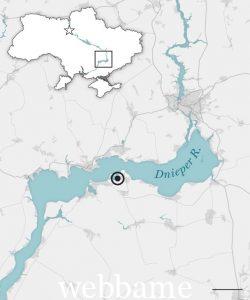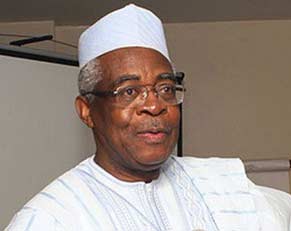

RUSSIA/UKRAINE WAR : WARNINGS OF ATTACK ON UKRAINE NUCLEAR PLANT SET THE WORLD ON EDGE
Dire warnings from Russia and Ukraine about a possible attack at a nuclear power plant in southern Ukraine sent some nearby residents fleeing Friday and others hunkering down amid heightened international fears of a radioactive disaster reports Washington Post
The ominous threat to the Zaporizhzhia nuclear power plant, Europe’s largest, according to Washington Post alarmed world powers and renewed calls by U.N. Secretary General António Guterres for an immediate cessation of hostilities and access for international nuclear experts.
“Any potential damage to Zaporizhzhia is suicide,” Guterres said after a meeting in Ukraine with President Volodymyr Zelensky and Turkish President Recep Tayyip Erdogan.
Ukrainian officials according to Washington Post said the Kremlin was behind explosions at the plant meant to create a “provocation.” Russian President Vladimir Putin accused Ukraine of shelling the plant and risking a “large-scale catastrophe.” Both Russia and Ukraine are warning that the other could conduct a “false flag” attack, an operation designed to disguise the country responsible.
Putin made the comments, his first about the recent fighting around the large complex along the Dnieper River, during a phone call with French President Emmanuel Macron. Like many world leaders, Macron emphasized the need for U.N. nuclear experts to visit the site under conditions laid out by Ukraine and the United Nations.
The Zaporizhzhia nuclear complex, currently occupied by Russian forces, is seen from across the Dnieper River in Chervonohryhorivka, Ukraine, on Aug. 15. (Heidi Levine for The Washington Post)
In the area around the plant, some families packed up their possessions and started to flee. Fathers and husbands, unable to leave on buses with their families, helped load belongings and waved to their loved ones in tearful goodbyes at a parking lot in the city of Zaporizhzhia, 30 miles to the northeast.
“It was a hard decision to make,” Serhii Aroslanov, 46, said of sending his family away as they boarded a bus to Bulgaria. “They are leaving because of the threat to the plant.” They planned to travel on to Germany, he told The Washington Post. Men between 18 and 60 years old are banned from leaving Ukraine in case they are needed for military service.
The nuclear power plant is currently under Russian control but operated by Ukrainian staff.
Russian forces ordered workers at the plant to stay home Friday and to limit personnel at the complex to only those who operate the plant’s power units, according to Energoatom, Ukraine’s state-run nuclear company.
Ukrainian officials accused Russian forces of preparing to disconnect the plant from Ukraine’s electric grid, depriving the country of a major source of power.
Guterres warned against any attempt to cut power to or from the facility and called for the area around the plant to be demilitarized.
“Obviously the electricity from Zaporizhzhia is Ukrainian electricity, and it’s necessary, especially during the winter, for the Ukrainian people. And this principle must be fully respected,” he said.
U.S. officials have watched fighting in the area with great concern and are monitoring reports of damage to the facility with a particular focus on power lines, a senior U.S. defense official told reporters Friday. The United States has called on Russia to relinquish control and withdraw from the area to reduce further risk.
“Fighting near a nuclear plant is dangerous,” the official said. “It’s really the height of irresponsibility.” The official spoke on the condition of anonymity under ground rules set by the Pentagon.
Ukrainian service members observe an area near a front line in the Zaporizhzhia region on Aug. 18. (Reuters)
Russia’s Foreign Ministry has rejected a proposal to demilitarize the area around the Zaporizhzhia plant, saying that it would make the facility “more vulnerable.” The presence of Russian troops near the plant is a “guarantee” there will be no reprise of the Chernobyl disaster, Russian Deputy Foreign Minister Sergei Ryabkov said Friday.
“The recklessness with which our opponents are playing with nuclear safety posese in Europe, involving potential risks for a huge territory, not only that surrounding the plant but also far beyond Ukrainian borders,” he told Russia’s Rossiya-1 television channel.
5 things you need to know about Russia’s intelligence failures ahead of the invasion of Ukraine
Ryabkov also warned parties of “carelessness” in the pursuit of “geopolitical goals.”
The International Atomic Energy’s director general, Rafael Mariano Grossi, warned that any further escalation related to the six-reactor plant could lead to a severe nuclear accident with potentially grave consequences for human health and the environment in Ukraine and elsewhere.
“In this highly volatile and fragile situation, it is of vital importance that no new action is taken that could further endanger the safety and security of one of the world’s largest nuclear power plants,” Grossi said.
Efforts to organize a visit by members of the IAEA have been thwarted by logistical and political disagreements.
Russian officials have proposed that experts could travel through the Russian-controlled Crimean Peninsula, but Ukraine, which claims the peninsula as its own, has called that a violation of its sovereignty and requested that visitors arrive through the capital, Kyiv.
On Friday, the Russian government said Putin supports an IAEA visit, but it was far from clear that it would happen with fighting continuing around the plant.
Oleksander Soroka weeps as he hugs his wife and son before they leave on an evacuation bus in Zaporizhzhia, Ukraine, on Aug. 19. The family has been living in the area after fleeing a different town earlier in the war. (Heidi Levine for The Washington Post)
For the most part, Zaporizhzhia on Friday looked much as it has during months of conflict, as most war-weary residents stayed put despite the threat.
For some families, however, it was the second time they have been displaced. “We’d been thinking about them leaving for a month,” Oleksander Soroka, 37, said of his wife and two children, who were boarding a bus to the Polish border. “But it was only this morning that it was finalized.”
“It’s really hard,” Soroka added. He had been living with his family in Zaporizhzhia since March after fleeing the nearby Russian-held town of Pology.
Russian forces seize Ukrainian nuclear power plant after shelling sets it on fire
Employees based in Enerhodar, the Russian-held city that is home to the plant, told The Post of the daily terror of working at the nuclear facility. Amid the deteriorating security situation, vital workers such as engineers and operational staff have fled to Ukrainian-held territory in recent weeks, they said, adding to worries about the plant’s functioning.
There are few residents of Enerhodar, a town with a prewar population of about 50,000, who don’t have some kind of connection to the plant.
The city was built in 1970 for families of workers at the nearby coal-fired power station on the river. The nuclear plant covers about half a square mile and was added 10 years later.
Katya Lubitskaya, a 33-year-old former resident of Enerhodar, said she is frightened about the safety of her mother and grandmother, who are still in the city.
“The scariest scenario is something like Chernobyl but worse,” she said, referring to the 1986 nuclear disaster.
She has encouraged her relatives to leave, but it is difficult. People have waited in lines for more than four days in their cars in the summer heat as artillery fire flies overhead. “It is not easy to find a car and driver either,” she said.
U.S. says Putin could use ‘false flag’ as excuse for war. Similar accusations have defined Putin’s career.
As Ukraine and Russia warned Friday of nuclear catastrophe, Lubitskaya said she was more alarmed but felt powerless. “For now, I can do nothing,” she said.
Also Friday, there were unconfirmed reports of explosions in the Russian-held Crimean Peninsula and a large explosion at a weapons depot in the Russian border city of Belgorod. Some Ukrainian officials said the attacks were carried out by Ukrainian special forces units.
Fighting has also intensified in the northeastern city of Kharkiv, where Russian rockets continued to cause damage and casualties early Friday, according to the regional governor. At least 17 people were killed and 42 wounded in two separate Russian attacks in recent days, Oleh Synyehubov said.
A couple walks by a building badly damaged by Russian shelling in the Saltivka neighborhood in Kharkiv on Aug. 11. (Heidi Levine for The Washington Post)
The Biden administration hopes steady deliveries of military aid will help tilt the trajectory of the war in Ukraine’s favor even as Russia makes incremental progress in the country’s east. The United States is poised to send an additional $775 million worth of security assistance for Ukrainian forces, marking more than $10 billion in aid since President Biden took office, the U.S. defense official said.
New items provided by the United States include ScanEagle drones that will allow Ukrainian forces to locate targets for their artillery crews, and blast-resistant armored vehicles that will help ground troops navigate mined areas. Those and other items will help increase mobility, the official said, as Ukraine looks toward future counteroffensives.
Newly provided Carl Gustaf recoilless rifles and TOW antiarmor systems point to a need for Ukrainian troops to move closer to enemy formations and destroy vehicles and fighting positions, a shift fromv the largely long-distance artillery fight occurring in the eastern part of the country





